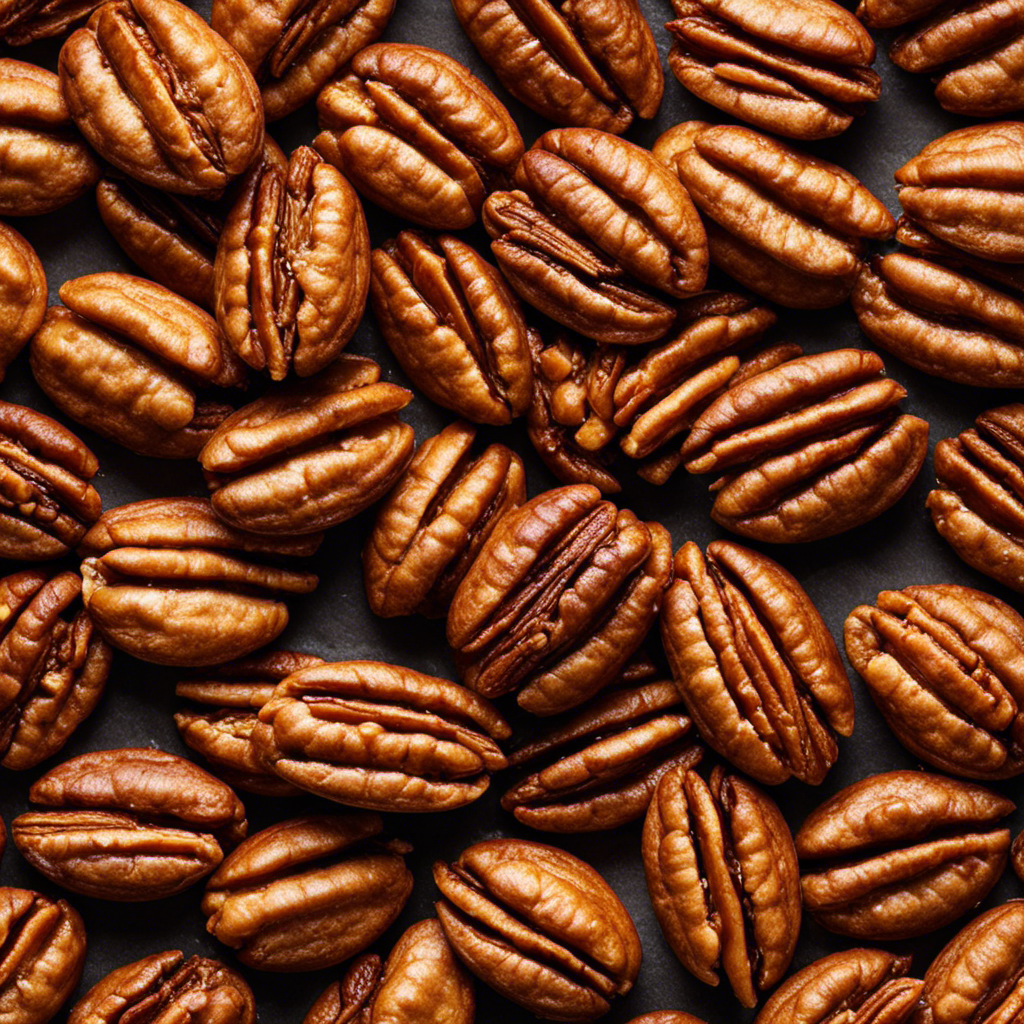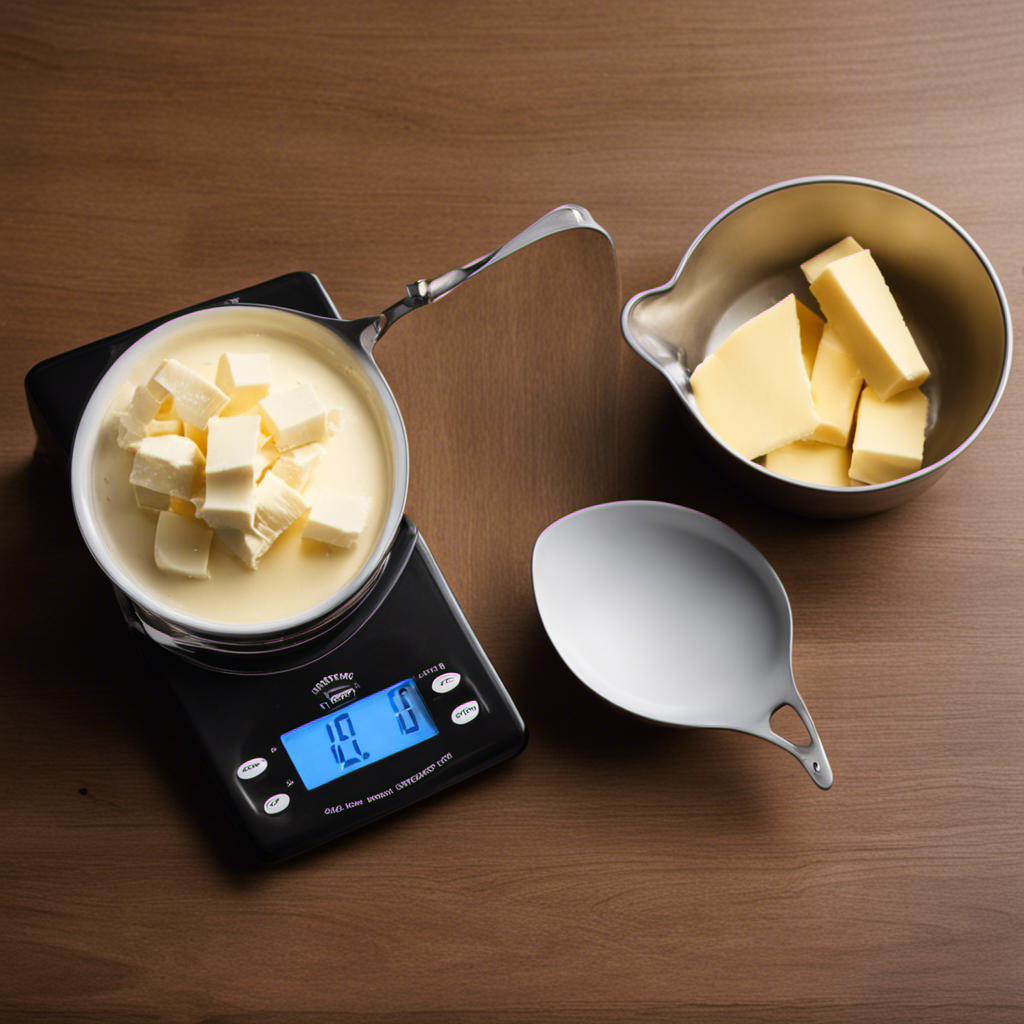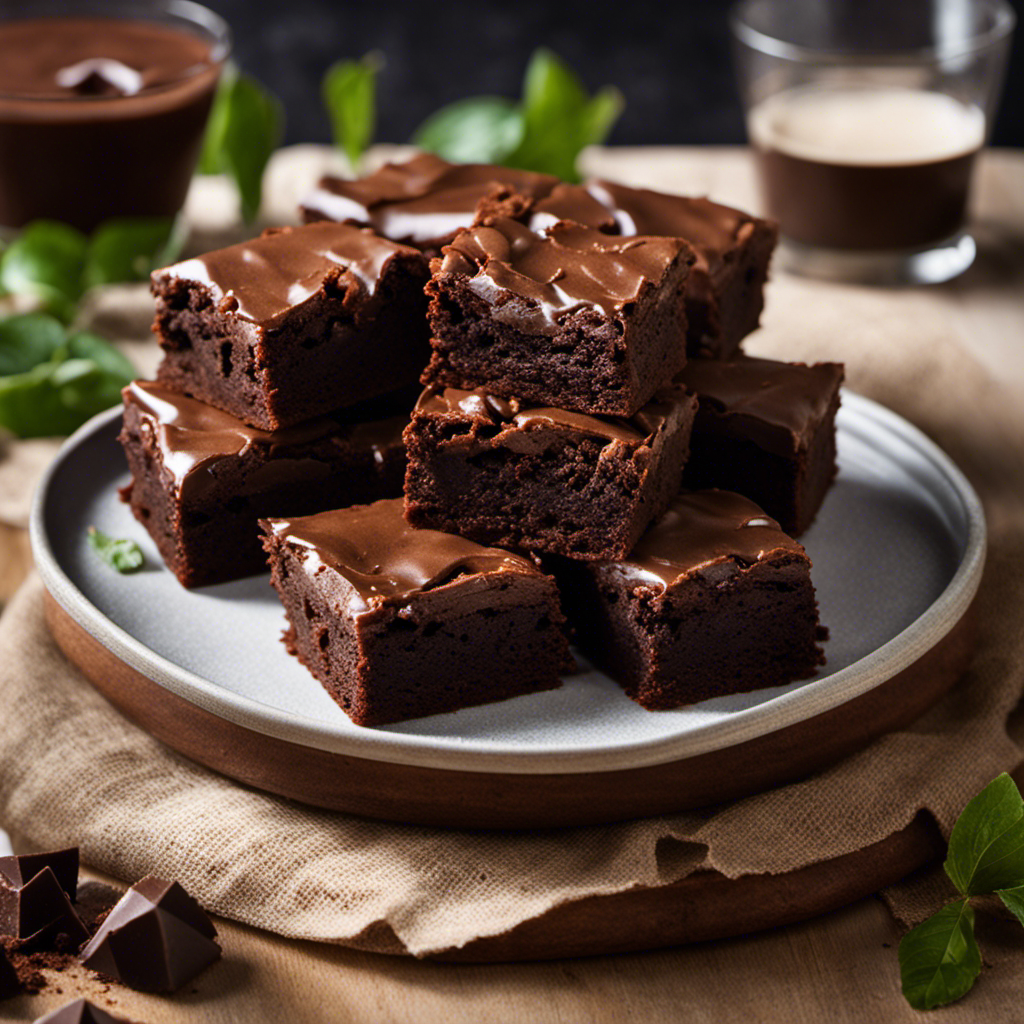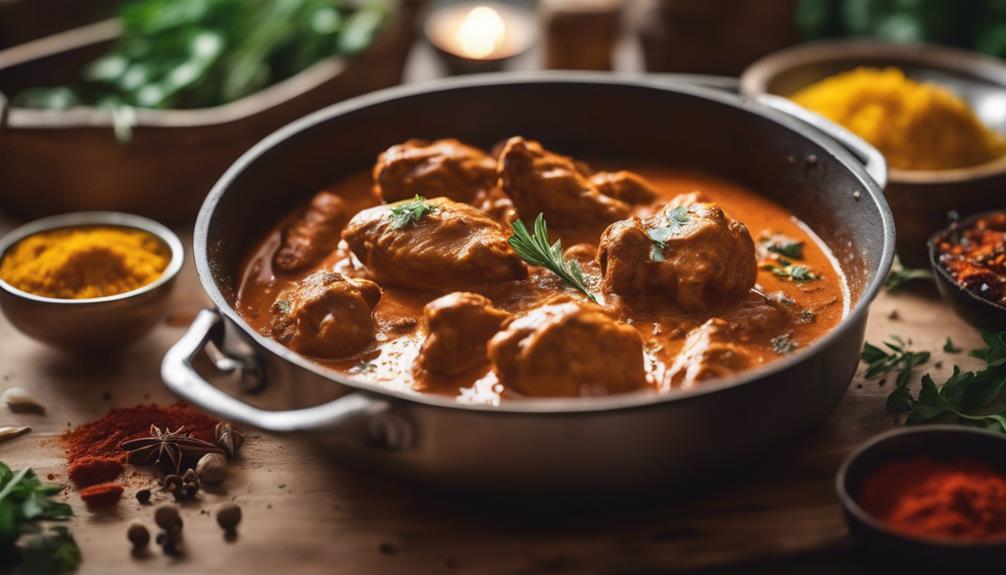I understand your skepticism. Crafting butter from whey might seem like a pointless endeavor. However, I can assure you that not only is it achievable, but it’s also incredibly rewarding.
In this article, I will guide you through the process of turning leftover whey into delicious homemade butter. With a few simple ingredients and a bit of effort, you’ll be able to enjoy the rich, creamy goodness of butter that you made yourself.
So let’s dive in and learn how to make butter from whey.
Key Takeaways
- Any kind of milk can be used to make butter from whey.
- Whey can be used in various ways, such as preserving, fermenting, cooking, or as a supplement.
- Homemade butter is beneficial due to freshness, quality control, higher nutrient content, and sustainability.
- Churning techniques and flavor variations allow for personalization and experimentation in butter-making.
Gathering the Necessary Ingredients and Equipment
To make butter from whey, you’ll need a few ingredients and some equipment.
First, let’s talk about the different types of milk that can be used. Any kind of milk can be used, whether it’s cow’s milk, goat’s milk, or even sheep’s milk. The key is to use fresh, high-quality milk for the best results.
Now, let’s move on to the equipment. You’ll need a large pot, a thermometer, a colander, and cheesecloth or a fine-mesh strainer. These will help you separate the whey from the milk.
Alternatively, you can also use a centrifuge or a cream separator to remove the whey. These methods are more efficient and yield better results, but they require specialized equipment.
Separating Whey From the Milk
First, strain the milk through a fine cheesecloth or coffee filter to separate the whey. This step is crucial in the butter-making process as it allows us to extract the whey, leaving behind the creamy milk solids that will eventually become butter.
Here are four methods of preserving whey and the benefits of homemade butter:
-
Freezing: Whey can be stored in airtight containers and frozen for later use. This is a convenient method as it allows you to have whey readily available whenever you need it.
-
Fermentation: By adding a starter culture to the whey, you can ferment it and create a tangy and probiotic-rich drink called whey kvass. This is a great way to utilize leftover whey and enjoy its health benefits.
-
Cooking: Whey can be used as a cooking liquid in various recipes like soups, stews, and sauces. It adds a subtle tang and enhances the flavor of the dish.
-
Animal feed: If you have livestock or pets, whey can be used as a nutritious supplement in their diet. It provides them with essential nutrients and helps reduce food waste.
Homemade butter offers several benefits, including:
-
Freshness: Making butter at home ensures that you have the freshest product possible, free from any preservatives or additives.
-
Quality control: You have complete control over the ingredients used, allowing you to choose the best quality milk and customize the flavor to your liking.
-
Nutritional value: Homemade butter retains more nutrients, such as vitamins A, D, and E, compared to store-bought options.
-
Sustainability: Utilizing whey as a byproduct of butter-making reduces waste and promotes a sustainable approach to food production.
Churning the Whey to Make Butter
After straining the milk, the next step in churning is agitating the separated liquid to form butter. Churning techniques play a crucial role in the final texture and flavor of the butter.
There are two main techniques: traditional hand-churning and modern machine-churning.
In traditional hand-churning, the cream is placed in a churn and vigorously shaken or rotated. This process allows the fat globules to collide and stick together, forming butter. The cream must be constantly agitated to prevent it from warming up and turning into whipped cream.
Machine-churning, on the other hand, utilizes mechanical devices to agitate the cream. This method is faster and more efficient, but it requires careful monitoring to ensure the butter doesn’t over-churn and become too firm.
Both techniques can be used to create different flavor variations. By incorporating herbs, spices, or even fruits into the cream before churning, you can infuse the butter with unique and delicious flavors. Experimentation is key to discovering your favorite flavor combinations.
Washing and Storing the Butter
When washing the butter, remember to knead it under cold water to remove any remaining buttermilk. Proper butter storage methods are essential to maintain its freshness and flavor.
Here are some tips for making flavored butter:
- Soften the butter: Leave it at room temperature until it becomes soft and easy to work with.
- Add flavorings: Mix in herbs, spices, or other ingredients like garlic or lemon zest to create unique flavors.
- Shape and store: Form the butter into a log or use a butter mold for a decorative touch. Wrap it tightly in parchment paper or plastic wrap and refrigerate.
- Freezing: If you want to store butter for a longer period, consider freezing it in an airtight container.
By following these tips, you can enjoy delicious flavored butter whenever you desire.
Now, let’s move on to using the leftover whey in other recipes.
Using the Leftover Whey in Other Recipes
To get the most out of your leftover whey, try incorporating it into recipes like smoothies, soups, or even baking for added flavor and nutritional benefits.
Whey is packed with protein, vitamins, and minerals, making it a valuable ingredient in cooking. In smoothies, whey adds a creamy texture and boosts the protein content, making it a great post-workout option.
In soups, whey can be used as a base or added for a tangy flavor. It also helps to thicken the soup and enhance its nutritional profile.
When baking, replacing water or milk with whey adds moisture and a subtle tanginess to your treats.
Frequently Asked Questions
What Are the Health Benefits of Consuming Whey Butter?
Consuming whey butter offers several health benefits due to its nutritional profile. Compared to traditional butter, whey butter is lower in fat and calories, while containing more protein and essential amino acids.
Can I Use Store-Bought Whey to Make Butter?
Yes, you can use store-bought whey to make butter. However, there may be potential drawbacks such as the quality and freshness of the whey. Different methods exist for making butter from whey without a churner.
Can I Use a Blender Instead of a Churner to Make Butter From Whey?
Yes, a blender can be used instead of a churner to make butter from whey. However, the technique may differ. It is important to ensure that the whey is properly strained and that the blender is capable of handling the process.
How Long Will the Butter Last in the Refrigerator?
I store my butter properly in the refrigerator to extend its shelf life. It stays fresh for up to a month. Proper storage includes wrapping it tightly in wax paper or foil to prevent oxidation and absorbing any odors from the fridge.
Are There Any Alternative Uses for Leftover Whey Besides Using It in Other Recipes?
There are several alternative uses for leftover whey. It can be used as a cooking liquid for grains and legumes, added to smoothies for extra protein, or used as a base for soups and stews. Creative ways to incorporate whey into everyday meals are endless.
Conclusion
In conclusion, making butter from whey is a simple and rewarding process. By following the steps outlined in this article, you can transform the leftover whey from cheese-making into delicious homemade butter.
Not only does this allow you to make the most out of your ingredients, but it also reduces food waste. Did you know that approximately 25% of all food produced worldwide is wasted? By utilizing whey in creative ways, like making butter, we can make a small but meaningful contribution towards reducing food waste and promoting sustainability.










